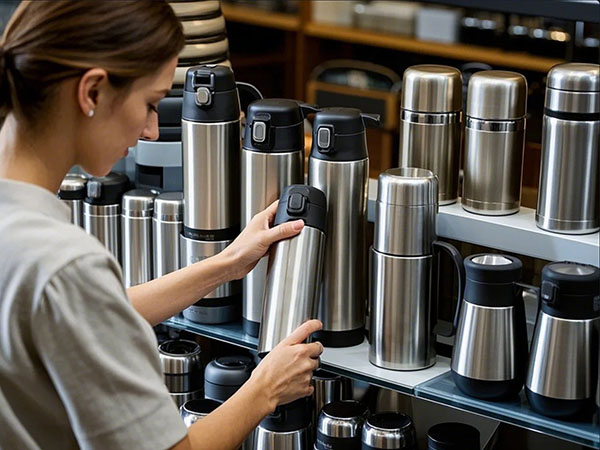In today's fast-paced lifestyle, a high-quality stainless steel vacuum insulated cup has become an indispensable daily companion. It not only maintains beverage temperature for extended periods but also ensures drinking safety. However, with countless options available in the market of varying quality, how does one select a truly superior product? Let's explore the methods for choosing a premium stainless steel vacuum insulated cup.
First, we can use a simple method to test the vacuum insulation performance. Quickly pour boiling water into the cup, tighten the lid, and wait 2-3 minutes before touching the outer surface. If the cup feels noticeably warm, its vacuum insulation may be compromised. Conversely, if the exterior remains cool, the insulation performance is likely excellent.
Next, examine the cup's sealing capability. After filling with water and tightening the lid, invert the cup on a flat surface to check for leaks. Any water seepage indicates poor sealing. Additionally, the lid should screw on smoothly without gaps to ensure proper sealing.
When selecting a cup, pay special attention to the quality of plastic components. Food-grade plastic parts have minimal odor, smooth surfaces, no burrs, longer lifespan, and resist aging. Inferior or recycled plastics emit strong odors, appear dull, have rough edges, and are prone to aging and breakage. Carefully inspect these components to ensure they meet food safety standards.

Capacity is another important consideration. The inner depth should match the outer height, and the actual capacity should correspond to labeled specifications. Some inferior products may add sand or cement to increase weight, so heavier doesn't always mean better. Verify the actual capacity through measurement.
Finally, assess the stainless steel quality. Among various specifications, 18/8 stainless steel (containing 18% chromium and 8% nickel) represents eco-friendly, rust-resistant, high-quality material. Poor-quality steel may appear too white or dark, and if rust spots appear after 24-hour immersion in 1% saline solution, it may contain excessive harmful elements.
Therefore, when choosing a stainless steel vacuum insulated cup, consider all factors: vacuum insulation performance, sealing capability, plastic component quality, capacity, and stainless steel quality. Only then can you select a truly high-quality, safe, and reliable product that will serve you well in daily life.